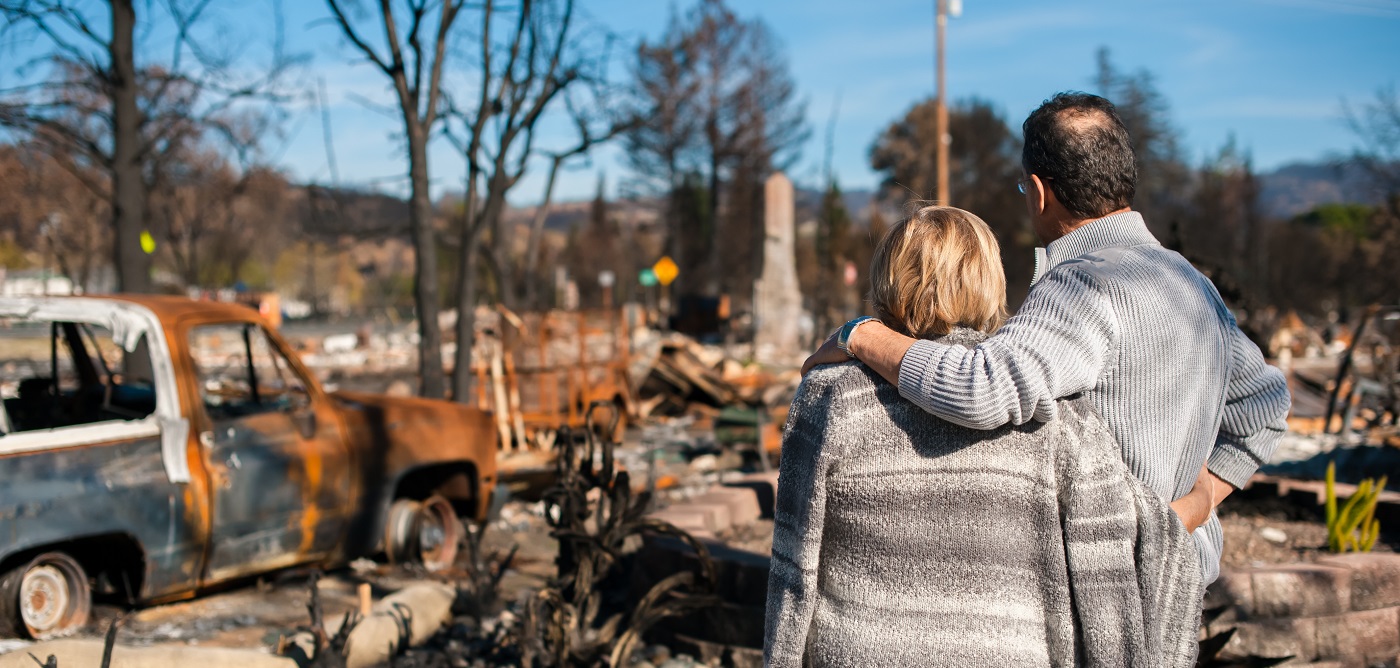Just a few weeks into summer 2021, signs were already clear that communities across the United States needed to brace themselves for another record-breaking wildfire season. In the Pacific Northwest, historic temperatures well into the 100s exacerbated drought conditions, creating the perfect conditions for wildfires to ignite. In California, the Mount Shasta Lava Fire began raging in late June, burning more than 25,000 acres in just over two weeks, officially becoming the state’s worst wildfire of 2021.
As wildfires increasingly worsen year by year due to climate change, insurance companies are faced with challenges of how to best offer protection and coverage while staying afloat. Here’s a look at how the insurance industry is reacting to the growing threat in a state where wildfires run rampant.
The insurance space reacts in one of the hardest-hit states
California has struggled to cope with years of record-breaking wildfires starting in 2017, which has led to insurance claims from homeowners that were unparalleled in number and size. This caused substantial losses for insurers, essentially draining decades’ worth of profits. In fact, insurance companies lost a total of $20 billion in 2017 and 2018, double the industry’s profits since 1991. As a result, many insurance companies started pulling out of fire-prone areas, thus jeopardizing people’s ability to buy and sell homes since banks generally require insurance in order to issue a mortgage.
In response, the Golden State has taken a series of increasingly assertive measures, including temporarily prohibiting companies from dropping some customers after wildfires. However, these steps are meant to only be a temporary fix as state officials consider more long-term adjustments that would allow the insurance industry to keep doing business in high-risk regions.
Most recently, California’s insurance regulator introduced a series of changes intended to prevent wildfire damage by reducing development in the wildland urban interface, the fire-prone area where homes run up against wilderness. The regulator proposed discouraging homebuilding in these areas by cutting off their access to the state’s high-risk insurance pool. As expected, there has been plentiful pushback from the building industry, with claims it isn’t necessary to limit development because building standards are already strong enough to protect homes in high-risk areas.
A desire to factor in climate change
Unsurprisingly, the issue of climate change is top of mind for the insurance industry as it relates to how to calculate policy coverage for natural disasters such as wildfires. More and more, insurers are wagering that climate change is going to be a lasting factor and are pushing the California state regulators to allow them to factor in future natural disasters when calculating customer premiums.
Insurance companies claim this move is critical to keep private insurers in the marketplace, pointing to earthquake insurance as an example of a sector that is already permitted to factor in future risk. In the state of California, insurers are allowed to use a market-based model to project premiums for earthquakes. If carriers can apply that same model to wildfire risk, it could prove a strong move in the right direction when it comes to protecting the interests of both carriers and the end-insured.
Moving forward as an industry
Whatever legislative outcomes, it’s likely that California will become a model for the rest of the United States in terms of how it navigates insurance amid the growing threats of natural disasters across the country. Players across the insurance ecosystem will be keeping an eye on where California goes from here.
It’s crucial for leaders in the P&C space to understand the impact climate change is having and will continue to have on the industry and end-insureds. It’s also important for InsurTech leaders to do their part—including developing more robust data, connectivity, and communication tools for carriers and agencies that can help the industry respond and adapt as the climate crisis evolves.


